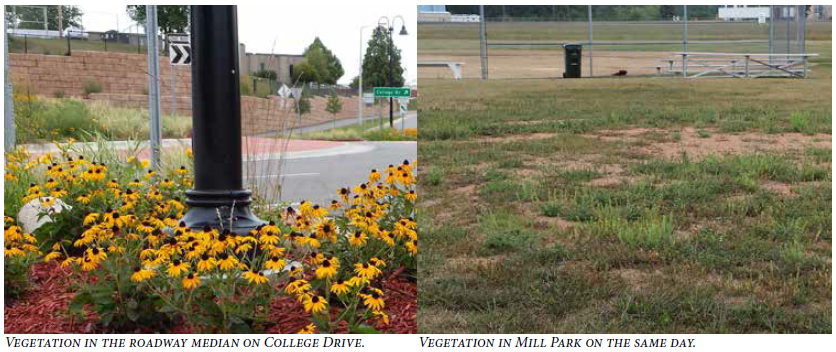A matter of priorities
The following is an excerpt from our upcoming Neighborhoods First report.
At a glance, it seems incoherent for the city of Brainerd to spend significant amounts of money to maintain flowers in the median of a road while city parks are overgrown with weeds. Do we really value the experience of the person driving through more than we care about the resident who lives here? Is there really more to be gained by beautifying our ditches instead of our parks? Of course not.
So does this reality actually reflect the priorities of the city government? In all likelihood it doesn’t, and so we have to ponder an even more important question: Why are the priorities of public officials not reflected in city action?
There are three main reasons. The first is the way in which big projects are funded. College Drive was paid for largely with “other people’s money,” which is to say federal and state sources. While some will point out that this is still our money (we all pay federal and state taxes), the proportion paid by local taxpayers was nominal and indirect. Given that, why not add flowers to the project? We’d surely put flowers in the park too if someone else would pay for it?
The second is the way in which the staff is organized and directed. Most local governments still work in silos. It is hard to blame a traffic engineer for seeing the city as a traffic network or a zoning official for seeing it as a zoning map. While it will not be as brutally efficient as the silo approach, the way to avoid this type of dissonance is to begin, develop and finalize all projects with a team of professionals, working on equal authority, directed to prioritize the community’s values and objectives above their own department’s.
The third is the disconnect that exists between city government and residents. This disconnect goes way beyond being listened to, which local governments generally do quite well. To really participate in a project, a resident is forced to engage within the ground rules of the city. Participating in public hearings or committees means giving up precious evening hours, standing in front of crowds and being quoted in the paper. Most residents stay away, even if they want their opinion heard.
To address these systematic shortcomings, cities should adhere to three guidelines.
- Projects should be developed based on needs expressed within the city’s neighborhoods, not in pursuit of available funding or in gambling on the potential for a big payoff. If available funding supports a local need, all the better, but a city should never undertake something they would not consider doing just because someone else will pay for it.
- All projects should be the product of a team of professionals, not one individual department or silo. When hiring and retaining staff, cities should emphasize cross disciplinary knowledge. There can be no such thing as a one-dimensional project.
- All projects should be the result of neighborhood initiatives. This report presents a model for how to deeply engage and understand a neighborhood. With this approach, a city will find there are a multitude of low cost, high return things to be done. The way residents use the city will identify those projects more clearly than any study, staff member or expert.

